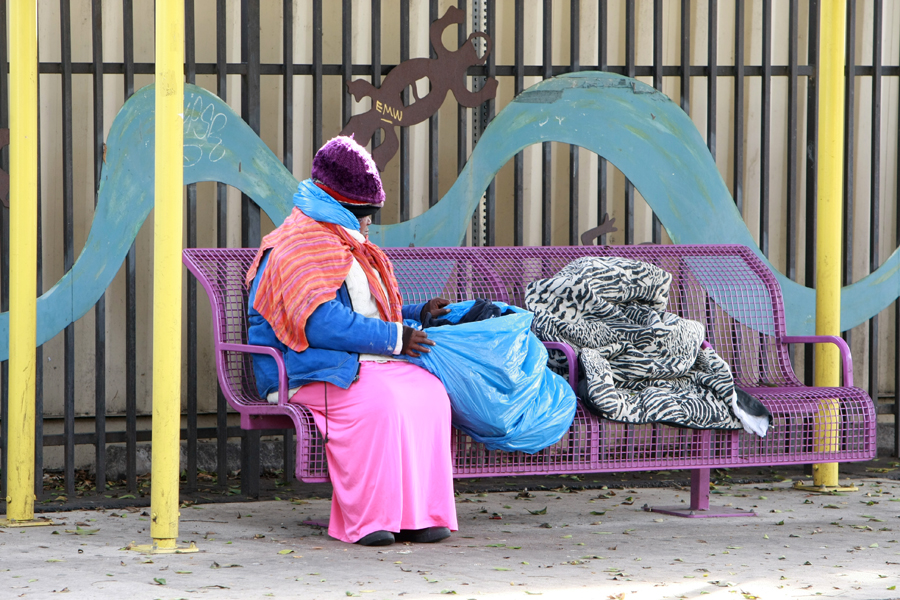Measure HHH passed in November to build housing for the homeless; Measure H on the March ballot is needed to pay for services.
By Blake Carter
Building housing for the homeless is the first step in helping to get over 47,000 people in Los Angeles County off of the streets, with about 28,000 of those people in the city of Los Angeles. But simply building structures may not solve the various issues.
Measure HHH was approved on the November 2016 ballot. Approximately $1.2 billion in bonds will be used in the city of Los Angeles to build 10,000 units to house homeless people and people at risk of becoming homeless. It could take several years before these housing units are built.
“The homeless population didn’t appear overnight, so the solution won’t happen overnight,” Assemblyman Sebastian Ridley-Thomas said. “We would do very well to invest in preventive measures like crisis intervention, temporary housing, and emergency relief to stabilize these individuals and make them self-sufficient. We have a growing population of veterans, women and their children who are finding themselves living in tents, encampments and vehicles. There is no current single funding stream to help the homeless and we are not well equipped to provide the needed services.”
According to the Los Angeles Homeless Services in 2016, there are nearly 3,000 homeless people in the Crenshaw District and surrounding areas. There is a major concern that simply building housing will not solve many of the issues that leads a person to be homeless. That is where Measure H comes into play.
“The second leg of that strategy was to make sure that with the housing, there were services,” Los Angeles City Councilman Marqueece Harris-Dawson said at the Empowerment Congress West Area Neighborhood Development Council meeting. “So we didn’t put people in housing that couldn’t handle it by themselves. We wanted to make sure that there was help on site.”
Measure H will create a countywide quarter-cent sales tax that will be used to fund homeless services and prevention. The services will include substance abuse treatment, health care, education, job training, transportation, emergency and affordable housing, and other supportive services for homeless children, families, foster youth, veterans, battered women, seniors, disabled individuals, and other homeless adults.
The quarter-cent sales tax will be in affect for a 10 year period.
“You probably won’t notice this tax, because on a $40 meal, it equals about 10 cents,” Harris-Dawson said. “On something that’s $4,000, you’re talking $100. So you have to spend about $4,000 before you feel it.”
The homeless issue is not only a problem for the people living on the streets or in vehicles, but it is a cost that all residents end up paying for.
“According to the National Alliance to End Homelessness, the cost of homelessness grows quickly,” Ridley-Thomas said. “Hospitalization for a homeless individual can cost $2,414 more than a non-homeless individual. Total cost factors include hospitalization, medical treatment, incarceration, police intervention and emergency shelters, all of which are almost borne exclusively by the taxpayer.”
There have been a number of court battles associated with the homeless problem.
“The legal system says that if you can provide a place for people to go, then you can legally tell them that they cannot be on the sidewalk, or sleep in their car,” Harris-Dawson said.
But the problem is that there is not much housing for the homeless, leaving no place to go for many people. That has led to certain areas of the city to be lined with tents, or people looking for areas where they can park their vehicle overnight. Because there are not many places for these people to go, they legally cannot be told that they cannot live on the streets.
The combination of measures HHH and H would go a long way to solving this problem.
“With the funding from Measure HHH (city of Los Angeles housing) and Measure H (county of Los Angeles services), we will work to substantially reduce the number of homeless people both in the city and county of Los Angeles,” Ridley-Thomas said. “This includes the homeless people who are disproportionately found along the Crenshaw District, Leimert Park, Jefferson Park, Mid-City, Country Club Park, Koreatown, and every underpass, exit, and entrance of the 10 Freeway.”
Voter turnout is expected to be low for the March 7 election, so it is important that people in the city of Los Angeles get to the ballot boxes.
“It’s a countywide vote,” Harris-Dawson said. “This is an important vote. The reason why this is important is because everybody in the county gets to vote. So in parts of the county where they don’t have homelessness, they’re not likely to be as supportive as parts of the county that do.”
If Measure H fails to pass, the city of Los Angeles could end up taking on the burden of the county’s homeless problem.
“I also don’t want a situation where L.A. is the only place that is building housing for the homeless,” Harris-Dawson said.
The county of Los Angeles has 88 cities. Harris-Dawson said that a councilman from an adjacent city joked with him that he was glad that the city of Los Angeles was building housing for the homeless, because there were a lot of homeless people in that councilman’s district. That implies that homeless people from other cities within the county of Los Angeles could attempt to send their homeless people to the city of Los Angeles.
“What measure H allows is a pile of money so that smaller cities can also have access to build housing, so that the burden is not all on the city of Los Angeles,” Harris-Dawson said.
While Measures HHH and H are not immediate fixes, Harris-Dawson is confident that the problem can be solved in less than a decade.
“The experts believe, and I’m, based on the evidence presented, pretty convinced, that we can actually solve the homeless problem in five to seven years,” he said. “In terms of the way that it is at this moment.”









